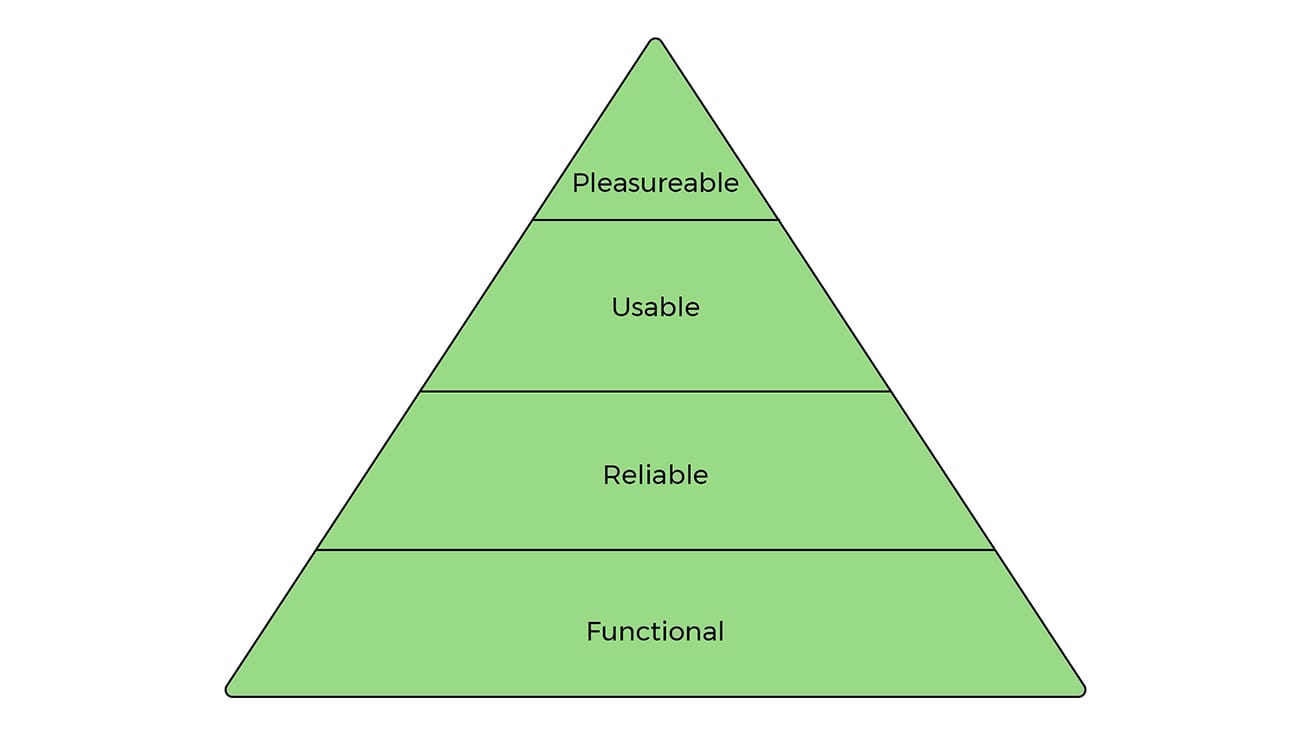User-centered design (UCD) is an approach that prioritizes human needs, behavior, and capabilities. The experiences designed under UCD accommodate these qualities so that the resultant product gets the required job done effortlessly, rendering happiness and satisfaction to the user.
Good design is based on a deep understanding of human psychology and is dependent on effective communication. Designers have to take the effort to truly understand the finer nuances of human interaction with technology – its possibilities and its limitations as well.
A ‘well-designed’ software can be loosely defined to be a system that performs without glitches and gets the work done within the stipulated time.
As easy-breezy as this sounds, a lot of behind-the-scenes efforts go into making a well-designed system. Designers invest a lot of their energies into user research and synthesizing the findings of those research runs. Further, while actually ideating for the solutions, designers also have to be armed with a deep understanding of the business they’re designing for and the enterprise goals as well.
That said, good design is always defined by how useful and helpful it actually ends up being for the users. This is why user research forms the foundation of good design.

User Research: Understanding Enterprise Users
Professionals working in the field of UX are well-versed with the implications involving user research. They understand that as humans, users aren’t always experts in articulating their needs. Yes, they do know what they want, but it is up to the designer to interpret the research findings and match them to the big picture.
While users may be largely aware of what they want and express their needs, they aren’t fully aware of ‘what can be done’. So, it is the designers’ job to supplement user needs with the ‘possibilities’. Designers have to flex their abilities to explore what solutions will best suit the users.
As is clear by the above, a well-designed system is born out of melding user needs with design expertise. However, that’s easier said than done.
What users say vs. What users do
UX researchers are well aware of the chasm separating the users’ feedback and actions. Therefore, on-site observations are an integral part of user research techniques. Observing the user going by his day-to-day interactions reveals deep insights about their behavior and thereby, their innermost desires regarding software upgrades.
To ensure that their designs resonate with the users, these points need to be kept in mind –
- Designers should not simply give users what they want. They must dig deeper to know why they want it.
- By learning why the users want a particular feature, designers are well-equipped to deal with the core issue in the best way possible.
- Designers have to understand the root cause, align it with the business goals, and then devise a solution accordingly. (for example, users may ask for email updates of the progress of a particular sales campaign – so should they keep getting continuous updates which may actually end up disturbing them? Why not instead implement a less-intrusive notification system which only flags out any anomalies – so that the corrective action might be taken immediately?).
Which brings us to the question …

Should designers aim for user satisfaction or user delight?
User delight can be understood to be the much-discussed but rather elusive “wow” factor in UX design. Simply put, it’s a stage of design that goes beyond resolving the basic issues that plague the user and out to dazzling him.
So, how does a designer go about “wowing” the user?
Hierarchy of User Needs

User satisfaction stems from the fulfillment of their needs, but the key here is to follow a list of priorities. This approach is derived from Abraham Maslow’s hierarchy of needs, which states that the initial satisfaction is triggered through basic needs (such as food and shelter). Once these are fulfilled, people move on to a higher level of needs like love, and self-esteem. The theory concludes that the foundational (basic) needs must be met before moving to the higher-level needs.
Similarly, while designing the UX for software, designers have to first aim at fulfilling basic needs like smooth and hassle-free functionality before moving on to the more pleasurable ones.
Thus, it is clear that higher levels of user delight can be experienced only when the product is functional, reliable, and useful.
Let us define the stages where users are expected to experience the feeling of delight –
- At first sight: This is when the user takes the first look at the interface. It appears approachable and non-intimidating. Everything the user needs is available at first glance.
- At first usage: This is when the user begins to actually use the software. He is able to move seamlessly through the functions and is able to navigate through the options with ease.
- At experiencing a glitch: The system is equipped to handle anomalies, be it the timely retrieval of documents from archives or sending warning alerts of depleting stocks. The user does not have to struggle with the right response in an SOS situation.
Visual delight and Functional delight
Delight on a visual level is experienced at the visceral level from the features seen on the interface including –
- Animated interactions
- Haptic or gestural commands
- Clever, useful content
Delight at a functional level what lies beyond the visual level. It works exactly as a caring, attentive waiter in a high-end restaurant – suggestive, but not pushy; never interrupting conversations and fulfilling requests instinctively. Examples of delight at a functional level include –
- Accurate auto completion
- Voice commands
- Relevant suggestions in functions
Experiencing this state of delight while using the software is more sublime and is even harder to provide. This state of delight, while less impressive to witness, is significantly harder to achieve.
This high level of delight is the result of streamlined workflows and removing user pain points – it’s all about designing a product which exceeds expectations.
While delight at a functional level may not be as “visually” appealing as seen at the surface, it is what converts a user into a fan.
Achieving functional delight through design
- Incorporating delight at the functional level needs to be laid into the company’s foundation just as how performance is built into a BMW or intuitiveness is ingrained in an iPhone.
- It all starts with gaining a rounded and holistic understanding of user psychology and contextual studies to know what it is that will truly delight the user at a deeper level.
- User personas come in handy while drafting a narrative based on user pain points and their goals. These personas have to be backed up with creative scenarios which describe exactly how incorporating a particular function brings unexpected delight to the user.
- Personalized interactions can be a great source of delight for the enterprise user. To have the software designed to fit individual needs within complex workflows goes a long way in bringing unexpected delight to the user.
- In the ideation stage, designers have to think of novel ideas to fulfill unmet user needs. Here, empathy holds the key – as a designer you have to anticipate and identify the exact points where users experience anxiousness or frustration – these are the areas that need to be eliminated.
When users express their needs, their description of what is ‘ideal’ may not necessarily match up to what is best for the overall functionality. This is why designers, in addition to following research and synthesis, need to seek a bird’s eye view of the project to come up with solutions that truly make sense from all perspectives, covering user needs and business goals. This is how the rather-elusive goal of design delight can be achieved.









